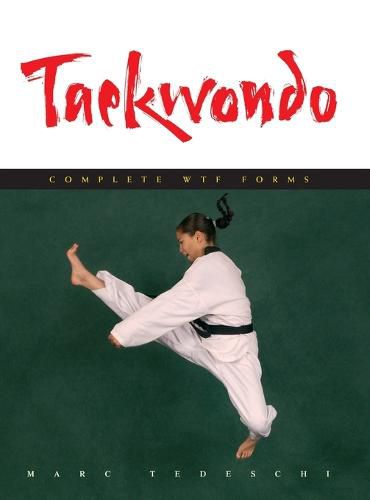Readings Newsletter
Become a Readings Member to make your shopping experience even easier.
Sign in or sign up for free!
You’re not far away from qualifying for FREE standard shipping within Australia
You’ve qualified for FREE standard shipping within Australia
The cart is loading…






This title is printed to order. This book may have been self-published. If so, we cannot guarantee the quality of the content. In the main most books will have gone through the editing process however some may not. We therefore suggest that you be aware of this before ordering this book. If in doubt check either the author or publisher’s details as we are unable to accept any returns unless they are faulty. Please contact us if you have any questions.
The most comprehensive book ever written on Taekwondo’s most widely practiced forms systems, including those sanctioned by the World Taekwondo Federation: P'algwae, T'aeguk, and WTF Black Belt.
This unique text is the first to offer a detailed, comprehensive presentation of Taekwondo’s three most widely practiced forms systems, including those sanctioned by Taekwondo’s largest governing organization, the World Taekwondo Federation. More than 5,000 photographs and 1,200 drawings spanning 512 pages document 25 individual forms that make up the P'algwae, T'aeguk, and WTF Black Belt forms systems.
Detailed introductory chapters provide a brief overview of Taekwondo’s structure, review the historical origins of forms, outline general principles of execution and interpretation, and thoroughly describe the underlying philosophical concepts and meanings associated with each individual form and form system. In subsequent chapters, each of the 25 forms begins with summary pages for quick reference, followed by a detailed breakdown of each movement, which includes larger photos, descriptive text, alternate views, closeups of complex actions, Korean nomenclature, precise footwork drawings, pattern diagrams on every page for constant reference, and examples of select movements applied to practical self-defense. Since forms training is intended to be a reflection of actual combat, descriptive text also outlines the combative purpose behind each movement, as well as common alternate interpretations.
While many books on forms have been produced over the years, none offer the level of detail, accuracy, and technical description provided by this text. View sample pages, read book reviews, or get more information at marctedeschi.com
$9.00 standard shipping within Australia
FREE standard shipping within Australia for orders over $100.00
Express & International shipping calculated at checkout
This title is printed to order. This book may have been self-published. If so, we cannot guarantee the quality of the content. In the main most books will have gone through the editing process however some may not. We therefore suggest that you be aware of this before ordering this book. If in doubt check either the author or publisher’s details as we are unable to accept any returns unless they are faulty. Please contact us if you have any questions.
The most comprehensive book ever written on Taekwondo’s most widely practiced forms systems, including those sanctioned by the World Taekwondo Federation: P'algwae, T'aeguk, and WTF Black Belt.
This unique text is the first to offer a detailed, comprehensive presentation of Taekwondo’s three most widely practiced forms systems, including those sanctioned by Taekwondo’s largest governing organization, the World Taekwondo Federation. More than 5,000 photographs and 1,200 drawings spanning 512 pages document 25 individual forms that make up the P'algwae, T'aeguk, and WTF Black Belt forms systems.
Detailed introductory chapters provide a brief overview of Taekwondo’s structure, review the historical origins of forms, outline general principles of execution and interpretation, and thoroughly describe the underlying philosophical concepts and meanings associated with each individual form and form system. In subsequent chapters, each of the 25 forms begins with summary pages for quick reference, followed by a detailed breakdown of each movement, which includes larger photos, descriptive text, alternate views, closeups of complex actions, Korean nomenclature, precise footwork drawings, pattern diagrams on every page for constant reference, and examples of select movements applied to practical self-defense. Since forms training is intended to be a reflection of actual combat, descriptive text also outlines the combative purpose behind each movement, as well as common alternate interpretations.
While many books on forms have been produced over the years, none offer the level of detail, accuracy, and technical description provided by this text. View sample pages, read book reviews, or get more information at marctedeschi.com